Productivity books or self-help books have existed for almost as long as writing itself.
From the Egyptian “Codes” of conduct to Roman classic texts like Cicero’s On Friendship and On Duties every culture has had its own version of productivity books.
Today productivity books become bestsellers and fill up rows of shelves in book stores. If our ancestors needed them, then how can we be too good for one?
Productivity books can help you unlock your potential and feel happier and healthier- whether you want to feel more confident, implement new habits into your daily routine, reduce stress, or obviously become more productive.
According to the mental health charity MIND, ‘Self-care techniques and general lifestyle changes can help manage the symptoms of many mental health problems,’
If you have been convinced to get your hands on one, here are the top 10 productivity books you should get your hands:
Table of contents
- 1. Deep Work by Cal Newport (2016)
- 2. Atomic Habits by James Clear (2018)
- 3. The 7 Habits of Highly Effective People by Stephen R. Covey (1989)
- 4. Digital Minimalism: Choosing a Focused Life in a Noisy World by Cal Newport (2019)
- 5. Outliers: The Story of Success by Malcolm Gladwell (2008)
- 6. The ONE Thing by Gary W. Keller and Jay Papasan (2013)
- 7. The Power of Habit: Why We Do What We Do in Life and Business by Charles Duhigg (2012)
- 8. The 80/20 Principle: The Secret to Achieving More with Less by Richard Koch (1997)
- 9. The Willpower Instinct: How Self-Control Works, Why It Matters, and What You Can Do to Get More of It by Kelly McGonigal (2011)
- 10. Smarter Faster Better: The Secrets of Being Productive in Life and Business by Charles Duhigg (2017)
- Summary
1. Deep Work by Cal Newport (2016)
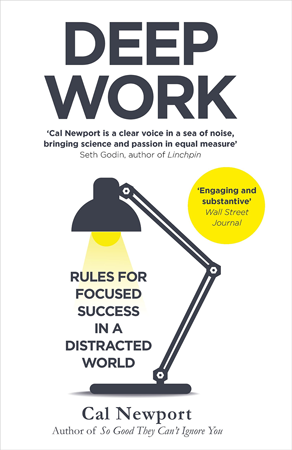
What is it about?
We all know by now what deep work is. Deep work is the ability to focus without distraction on a cognitively demanding task. It’s essentially a skill that allows you to quickly master complicated information and produce better results in less time. This term was popularly coined by Cal Newport in his best-selling 2016 book of the same name.
Deep Work takes a deep look into how the rise of technology has wrecked our ability to concentrate deeply on tasks – and how to overcome this blockade. The book is divided into two parts. Part 1: The Idea focuses on what Deep Work is and how cultivating a deep work ethic in almost any profession, will produce massive benefits. In Part 2: The Rule he presents a rigorous training regimen, presented as a series of four “rules,” for transforming your mind and habits to support this skill.
Cal Newport turns the story of impact in the connected age on its head in Deep Work. Rather than arguing that distraction is bad, he extols the virtues of its opposite. Throughout the book, the reader is taken through a journey from one story to another and no-nonsense advice. Deep Work is truly an indispensable guide to anyone seeking focused success in a distracted world.
Who is it for?
- Anyone trying to focus on cognitively difficult work
- Workers interested in learning productivity-enhancing technologies
- People whose days are absorbed by email, social media, and technology
2. Atomic Habits by James Clear (2018)
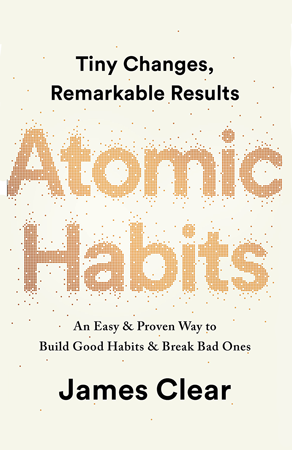
What is it about?
If you haven’t yet been convinced to start reading productivity books this is the push you needed. Atomic Habits by James Clear is the mother of productivity books. It was the #1 New York Times bestseller and has sold over 2 million copies worldwide. Moreover, it is one of the few books to have a rating of 4.4/5 on Goodreads.
Atomic Habits offers a proven framework for improving – every day using tiny changes that can bring about remarkable results. One of the world’s greatest experts on habit formation, James Clear, explains practical tactics for forming good habits, breaking bad ones, and mastering the small actions that lead to amazing results.
The book is divided into 5 parts. The first part called The Fundamentals makes a case for tiny changes and how they can make a big difference, drawing from scientific research and real-life examples. Part 2 through to part 5 elucidate the 4 golden rules to bringing about small changes. And lastly, part 6 called Advanced Tactics expounds on the ways to go from being “merely good to truly great”.
Who is it for?
- Those who strive to change their habits or break harmful ones
- People who appreciate figuring out why they act the way they do
- Those that want to attain even more
3. The 7 Habits of Highly Effective People by Stephen R. Covey (1989)
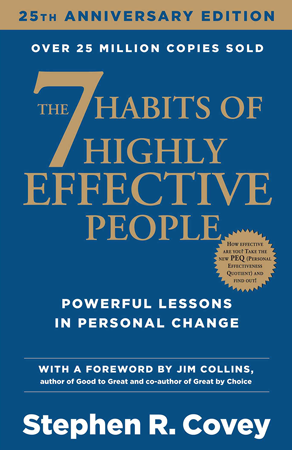
What is it about?
The 7 Habits of Highly Effective People, is one of the most celebrated self-help books of all time. If Atomic Habits is the mother of productivity books then this book is the father of productivity books. When it was first published way back in 1989, the book became an instant rage because readers were suddenly hit in the face with the startling realization that they were hurtling down the wrong direction; better, they discovered that there were so many simple things they could do to reverse their course.
The book gives an overview of the 7 different habits and how the 7 principles can help an individual flourish both personally and professionally.
This book was a wonderful education for people, education in how to live life effectively and get closer to the ideal of being a ‘success in life.
Who is it for?
- People who want to improve their connections
- People who want to improve their connections
- Anyone looking to learn more about a self-help classic
4. Digital Minimalism: Choosing a Focused Life in a Noisy World by Cal Newport (2019)
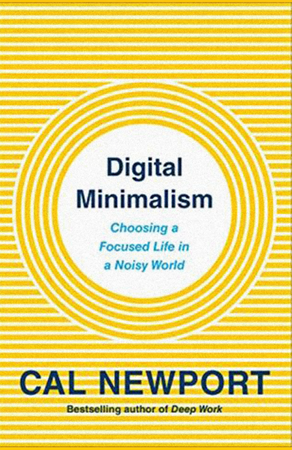
What is it about?
The Evening Standard dubbed it the ‘Digital Minimalism is the Marie Kondo of technology’.
Another book by Cal Newport, Digital Minimalism is a pragmatic guide to navigating today’s media landscape. If we learned anything from the Facebook–Cambridge Analytica data scandal it’s how multiple billion-dollar companies will go to great lengths to make sure your eyes are as glued to their platforms as possible. Fortunately, there is also growing skepticism surrounding new technology and digital media. People have become more eager to reclaim their autonomy and, while they’re at it, live more satisfying and healthy lives. This has brought about a multitude of tools and methods, with which you too can regain the focus and productivity that comes from stepping back from new technology.
The book has 2 parts. In Part 1: Foundations Cal Newport comes back with his nomenclature game, giving a name to this movement, and making a case for it. In Part 2 called the Practices, he elaborates on the various methods that can help achieve Digital Minimalism.
Who is it for?
- Anyone feeling overwhelmed with social media
- People looking for tips to boost productivity
- News junkies in need of a detox
5. Outliers: The Story of Success by Malcolm Gladwell (2008)
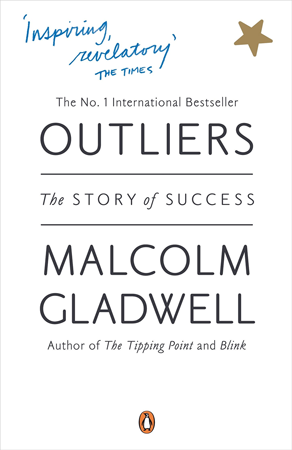
What is it about?
How likely are you to believe someone if they told you your birthdate had an impact on your likelihood of success? That is the point Malcolm Gladwell, author of books like Talking to Strangers, David and Goliath, Blink, and The Tipping Point, sets off to convince you in this book.
In this remarkable book, Malcolm Gladwell takes us on an intellectual journey into the world of “outliers”—the smartest and brightest, the most recognizable and successful people. He poses the question, “what makes high-achievers different?” His answer is that we pay too much attention to what successful people are like, and too little attention to where they are from: that is, their culture, their family, their generation, and the idiosyncratic experiences of their upbringing.
Gladwell highlights the Roseto effect in his introduction, which explains how a small, close-knit community in Pennsylvania had essentially no history of heart illnesses, substance misuse, or societal woes, owing to its Italian-descended population’s friendly, warm social environment. The remainder of Outliers has two parts: “Part One: Opportunity” contains five chapters, and “Part Two: Legacy” has four. The book also contains an Introduction and Epilogue.
Who is it for?
- Anyone interested in learning more about success and how to achieve it
- Teachers, coaches, and those who work in the training industry
- Professionals in consultancy and those interested in policy reform
6. The ONE Thing by Gary W. Keller and Jay Papasan (2013)
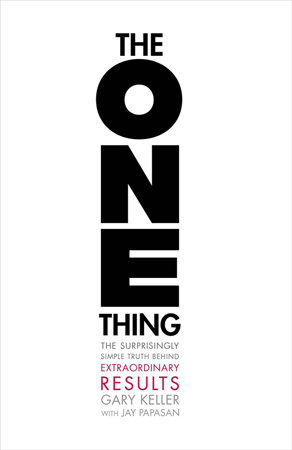
What is it about?
Gary Keller, co-founder, and chairman of Keller Williams Realty International, one of the largest real estate companies in the US, realized he was so busy with his work that he was actually holding himself back from achieving success. He found that if he took time to focus on just one task, it would make him more successful than if he tried to do many different things at once.
You probably already have a clue what the book is about. The book discusses the importance of reducing one’s workload by concentrating on the single most important task in any given project.
The first part of the book entitles “The Lies: They Mislead and Derail Us” discusses the myth of multitasking. The second part called “The Truth” poses the one big question, “What’s the ONE Thing I can do such that by doing it everything else will be easier or unnecessary?”. Lastly, the third part “Extraordinary Results” gives you tools to ensure you can put your time to use productively to get there.
Who is it for?
- Anyone who wishes to increase their productivity
- Anyone who is having difficulty finding the time to dedicate to their goal
- Anyone seeking more clarity and purpose in their daily lives.
7. The Power of Habit: Why We Do What We Do in Life and Business by Charles Duhigg (2012)
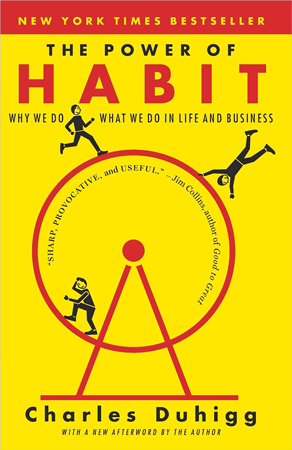
What is it about?
The Power of Habit is a quintessential book of the 21st century. In this book, Charles Duhigg, a Pulitzer Prize-nominated investigative reporter, examines the exciting edge of scientific discoveries that explain why habits exist and how they can be changed. Duhigg brings to life a whole new understanding of human nature and its potential for transformation, with penetrating intelligence and the ability to distill vast amounts of information into engrossing narratives.
The stories in the book range from neuroscientists studying a woman whose brain structure significantly changed as a result of small life events to how Procter and Gamble transformed Fabreeze from the biggest flop in company history to a bestseller all because of a slight change in advertisement.
The book has three parts. Part 1, part 2, and part 3 delve into the habits of individuals, successful organizations, and societies.
Who is it for?
- People who are attempting to form good habits, such as regular exercise, or to break bad ones, such as eating fast food
- Anyone interested in how corporations manipulate our proclivity to form habits should read this.
- Anyone who wishes to introduce new routines into their organizations.
8. The 80/20 Principle: The Secret to Achieving More with Less by Richard Koch (1997)

What is it about?
If you’ve studied business, economics, or computer science you’re well familiar with the power of the Pareto Principle. The 80/20 principle (aka the Pareto principle) states that 80% of the results come from 20% of the causes. This 80/20 rule is what is behind the nomenclature and inspiration for the book.
The 80/20 Principle demonstrates how we can accomplish much more with much less effort, time, and resources by identifying and focusing our efforts on the 20 percent that truly matters. Richard Koch explains how the principle works and how we can apply it in a systematic and practical way to vastly improve our effectiveness, our careers, and our businesses.
Who is it for?
- Anyone who wants to improve their outcomes without putting in more effort.
- Anyone who wants to free up more time and live a happier life
- Anyone who wants to increase their business’s profitability
9. The Willpower Instinct: How Self-Control Works, Why It Matters, and What You Can Do to Get More of It by Kelly McGonigal (2011)

What is it about?
This book is based on Stanford University psychologist Kelly McGonigal’s wildly popular course “The Science of Willpower,” that she developed after years of watching her students struggling with their choices.
The Willpower Instinct is the first book to explain self-control science and how it can be used to improve our health, happiness, and productivity. The Willpower Instinct, based on the most recent research and combining cutting-edge insights from psychology, economics, neuroscience, and medicine, explains what willpower is, how it works, and why it matters.
This ground-breaking book combines life-changing prescriptive advice with complimentary workouts to support readers in achieving goals ranging from a healthier lifestyle to more patient parenting, from increased productivity at work to finally finishing the basement.
Who is it for?
- Anyone who wishes to achieve their objectives more effectively
- Anyone who struggles with temptation, addiction, procrastination, or a lack of motivation
- Anyone who wants to make real and lasting changes in their life
10. Smarter Faster Better: The Secrets of Being Productive in Life and Business by Charles Duhigg (2017)
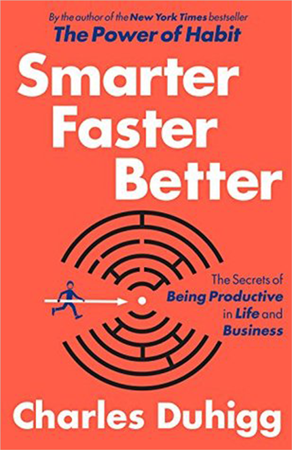
What is it about?
The newest book on the list and a second one by Charles Duhigg, Smarter Faster Better explores the science of productivity, and why, in today’s world, managing how you think—rather than what you think—can transform your life.
Using the most recent research in neuroscience, psychology, and behavioral economics, as well as the experiences of CEOs, educational reformers, four-star generals, FBI agents, airplane pilots, and Broadway songwriters, this meticulously researched book, explains that the most productive people, companies, and organizations don’t just act differently. They view the world, and their choices, in profoundly different ways.
This book explores eight concepts that are crucial to increasing productivity. Stories include the cockpit of two passenger jets (one crashes) to understand the importance of constructing mental models, basic training in the U.S. Marine Corps, where the internal locus of control is exploited to increase self-motivation, and so many more.
Who is it for?
- Leaders who want to motivate their teams
- Entrepreneurs who want to energise a company or its employees
- Anyone with a long-term, serious goal
Summary
Productivity books have long been accused of promoting a toxic hustle culture, one that places an increased amount of attention on success and doing what capitalism deems as “productive work”. And while all these statements hold some amount of integrity, it is also true productivity books are a boon for those struggling to maintain work-life balance and tackle challenging tasks.



